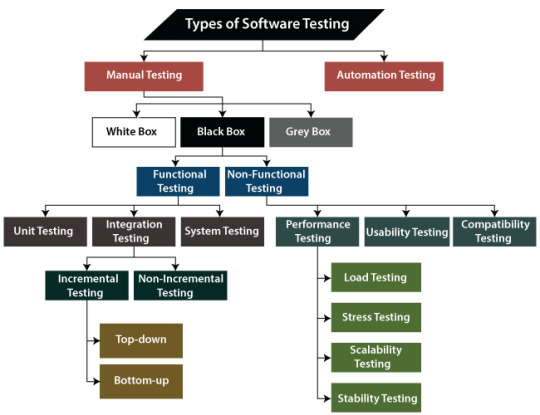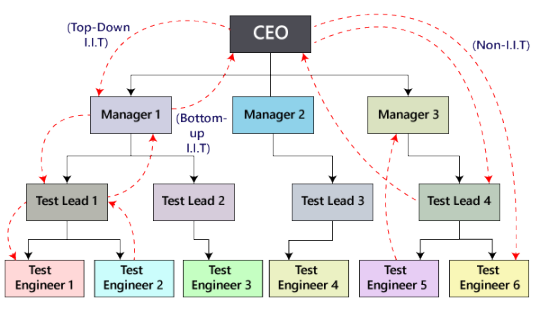#System_Testing
Explore tagged Tumblr posts
Text

software testing is a process of analyzing an application's functionality as per the customer prerequisite.
0 notes
Text
Delivery for Mr. Assange (2013), !Mediengruppe Bitnik
Aquí les va una de mis piezas favoritas (⌒▽⌒)☆:
Doreen A. Ríos <3
"Delivery for Mr. Assange" es una pieza de arte por correo en vivo de 32 horas, realizada el 16 y 17 de enero de 2013. El 16 de enero de 2013! Mediengruppe Bitnik envió un paquete dirigido a Julian Assange en la embajada de Ecuador en Londres. El paquete contenía una cámara que documentaba su viaje a través del sistema postal del Royal Mail a traves de un agujero en el paquete. Las imágenes capturadas por la cámara fueron transferidas a este sitio web y a la cuenta de Twitter de Bitnk en tiempo real. Así, mientras el paquete se dirigía lentamente hacia la embajada ecuatoriana en Londres, cualquier persona en línea podía seguir el estado del paquete en tiempo real. El paquete era un REAL_WORLD_PING, un SYSTEM_TEST, insertado en una crisis diplomática muy tensa. Julian Assange ha estado viviendo en la embajada de Ecuador en Londres desde junio de 2012. Aunque se le concedió asilo político por el Ecuador en agosto de 2012, no puede salir de los locales de la embajada por temor a ser detenido por las autoridades del Reino Unido. Queríamos ver donde el paquete terminaría. Si llegaría a su destino. Y qué ruta tomaría. ¿Sería retirado del sistema postal? O se completa con éxito la prueba del sistema y llegar a Julian Assange. Después de aprox. 32 horas y un viaje en varias bolsas postales, furgonetas y a través de centros de entrega, el paquete fue entregado a la embajada ecuatoriana en Londres en la tarde del 17 de enero de 2013. Para entonces, varios miles de personas se habían reunido en Twitter para seguir el tentador e intenso viaje. El experimento fue coronado por la actuación en directo de Julian Assange para la cámara.


7 notes
·
View notes
Text
minitest: notes
There are three ways to run the tests:
bin/rails test:system
You can use TESTOPTS environment variable to pass extra arguments to minitest.
bin/rails test
All the arguments are passed to minitest as is. You can as well use those provided by the rails plugin.
bin/rake test
You can use TEST env variable to pass a pattern, to choose which tests to run. Corresponding files get required before running minitest.
Also, you can use TESTOPTS to pass extra arguments.
Quitting byebug results in child processes being orphaned.
system tests
capybara gets configured when application_system_test_case.rb is required from a system test. Which requires system_test_case.rb. This one runs SystemTest::Server. Which sets Capybara.server. And here's where capybara starts puma, or any other web server, running rails app. capybara does that when first DSL method is called.
Here's where selenium-webdriver starts chromedriver.
how tests gets to run
test command calls Minitest.autorun. Which registers at_exit handler, that runs the tests (Minitest.run). minitest plugin rails requires the test files.
how tests get to run 2
test:system is a rake command. First it requires all the test files. Then runs them. Requiring a test file means requiring all the helper files down to the one that sets up minitest to run.
test is a rails command, that simply executes Minitest.autorun, and register rails plugin. rails plugin requires all the needed files, when minitest gets to run.
where capybara waits
Here's where capybara waits for an element to appear on the page.
list threads
Thread.list.each{ |t| puts t }.reduce{}
enable logging
selenium-webdriver:
Selenium::WebDriver.logger.level = :debug # or $DEBUG = true
chromedriver-helper
It breaks other projects' tests, since it overrides chromedriver executable.
how selenium selects options
Capybara::Node::Actions#select (Capybara::Node::Element) Capybara::Node::Element#select_option apybara::Selenium::Node#select_option Selenium::WebDriver::Element#click Selenium::WebDriver::Chrome::Bridge#click_element Selenium::WebDriver::Chrome::Bridge#execute Selenium::WebDriver::Chrome::Bridge#raw_execute Selenium::WebDriver::Remote::Http::Default#call (Selenium::WebDriver::Remote::Http::Default)
#en#tech#dev#ruby#rails#test#minitest#options#arguments#args#opts#testing#system tests#tests#selenium#webdriver#selenium webdriver#logger#logging#log#debug#debugging#thread#chromedriver#notes#test notes#debug notes#debugging notes#test system#minitest notes
0 notes
Quote
@Ma3Route: 18:42 president leaving Ngong town at vet now via @System_Tester
http://twitter.com/Ma3Route
0 notes
Quote
@Ma3Route: 18:42 president leaving Ngong town at vet now via @System_Tester
http://twitter.com/Ma3Route
0 notes
Quote
@Ma3Route: 18:42 president leaving Ngong town at vet now via @System_Tester
http://twitter.com/Ma3Route
0 notes
Text
@Ma3Route: 18:42 president leaving Ngong town at vet now via @System_Tester
from http://twitter.com/Ma3Route via IFTTT
0 notes
Quote
@Ma3Route: 18:42 president leaving Ngong town at vet now via @System_Tester
http://twitter.com/Ma3Route
0 notes
Quote
@Ma3Route: 18:42 president leaving Ngong town at vet now via @System_Tester
http://twitter.com/Ma3Route
0 notes
Photo

Delivery for Mr. Assange – !Mediengruppe Bitnik
«Delivery for Mr. Assange» is a 32-hour live mail art piece performed on 16 and 17 January 2013. On 16 January 2013 !Mediengruppe Bitnik posted a parcel addressed to Julian Assange at the Ecuadorian embassy in London. The parcel contained a camera which documented its journey through the Royal Mail postal system through a hole in the parcel. The images captured by the camera were transferred to this website and the Bitnk Twitter account in realtime. So, as the parcel was slowly making its way towards the Ecuadorian embassy in London, anyone online could follow the parcel's status in realtime. The parcel was a REAL_WORLD_PING, a SYSTEM_TEST, inserted into a highly tense diplomatic crisis. Julian Assange has been living at the Ecuadorian embassy in London since June 2012. Although he was granted political asylum by Ecuador in August 2012, he is unable to leave the embassy premises for fear of being arrested by UK authorities. We wanted to see where the parcel would end up. Whether it would reach its destination. And which route it would take. Would it be removed from the postal system? Or would it successfully complete the system test and reach Julian Assange. After aprox. 32 hours and a journey in various postal bags, vans and through delivery centres, the parcel was delivered to the Ecuadorian embassy in London in the afternoon of 17 January 2013. By that time several thousand people had gathered on Twitter to follow the tantalizing and intense journey. The experiment was crowned by Julian Assanges live performance for the camera.
http://wwwwwwwwwwwwwwwwwwwwww.bitnik.org/assange/
0 notes
Photo

Integration testing
Integration testing is the second level of the software testing process comes after unit testing.
0 notes
Quote
@Ma3Route: 07:32 whoever constructing ngong road should do something via @System_Tester
http://twitter.com/Ma3Route
0 notes
Quote
@Ma3Route: 07:32 whoever constructing ngong road should do something via @System_Tester
http://twitter.com/Ma3Route
0 notes
Quote
@Ma3Route: 07:32 whoever constructing ngong road should do something via @System_Tester
http://twitter.com/Ma3Route
0 notes
Text
@Ma3Route: 07:32 whoever constructing ngong road should do something via @System_Tester
from http://twitter.com/Ma3Route via IFTTT
0 notes
Quote
@Ma3Route: 07:32 whoever constructing ngong road should do something via @System_Tester
http://twitter.com/Ma3Route
0 notes